Stay in the know on all smart updates of your favorite topics.
Sensemakers Workshop MeshCore, configure your own node

Join us to learn to understand the concept of MeshCore, an open source, off grid, decentralized, mesh network build to run on affordable low-power devices!
Prepare and configure your own device as to contribute to Amsterdam wide coverage, or just for fun / to chat:-)
The workshop is based on this device: https://nl.aliexpress.com/item/1005007752194012.html Of course you may bring a different device, it only might take a little extra effort on your part if the settings are different. We will try to help of course!
For more info and rsvp: https://sensemakersams.org/events/
The workshop is from 19-21h in the Makerspace of the OBA and you can just walk in!
OBA: Oosterdokskade 143, 1011DL Amsterdam
Sensemakers X-Mas Workshop

For our end-of-the year event we have some extra opportunities to build, create and even program your own souvenir to take home!
Please if you want to make and take home the Xmas lights you see in the picture, the kit costs 25,- (we also have 2 Pay-It-Forward kits). Of course you can also work in other small projects or 3D print a small Xmas tree or make (for children!) a self designed wooden lamps!
You don't have to rsvp via meetup, the workshop is from 19-21h in the Makerspace of the OBA and you can just walk in!
OBA: Oosterdokskade 143 1011DL Amsterdam
The Amsterdam Hunger Game

Learn with the case study Amsterdam to anticipate future food disruptions. Understand the city's food supply chain vulnerabilities is critical for enhancing food resilience. Enhance food resilience in empowerment of people in urban food growing.
Sousveillance: Civic Surveillance of Surveillance Cameras

How can citizens reclaim transparency in a world increasingly shaped by networked safety and enforcement cameras? Join our ThingsCon workshop to explore the power of sousveillance—using the tools of surveillance to scrutinize the systems that watch us.
Networked safety and enforcement cameras increasingly shape urban life, yet their presence and function often remain opaque. This workshop explores how citizens can turn the tools of surveillance back onto the systems that watch them: Redirecting object recognition to identify street camera's for civic scrutiny. Building on several camera spotting tours supported with various versions of a “mobile transparency app”, we introduce a new prototype that uses object recognition to detect street cameras and log them through a civic annotation workflow.
The workshop is for anyone interested in civic tech, democratic oversight, and human-scale alternatives to opaque “smart city” systems. Together, we explore how civic sousveillance might evolve into a deeper practice of scrutinizing—and reshaping—the technologies embedded in our streets.
More info and tickets: https://thingscon.org/events/things-2025
More info on the Human Values for Smarter Cities research project we are conducting: https://humanvaluesforsmartercities.nl/
Waag Open: social socials

Klaar met je afhankelijkheid van big tech’s social mediaplatforms? Ben je op zoek naar een alternatief waar sociale interactie en verbinding weer centraal staan? Waag Futurelab helpt je op weg!
Tijdens deze Waag Open gaan we samen aan de slag met de (on)mogelijkheden van social media en speuren we nieuwe alternatieven af. Want hoewel sociale media niet meer weg te denken zijn uit ons dagelijks leven, hebben we geen regie over de platformen die we zo intensief gebruiken. Het verdienmodel van big tech zet bewust in op verslaving en polarisatie, waarbij hun algoritmen desinformatie verspreiden en zo onze democratie ondermijnen. Met eindeloze, verslavende feeds zetten ze bovendien onze mentale gezondheid onder druk.
Dat moet anders. En gelukkig: dat kán ook anders.
Social socials
In deze workshop leer je meer over de fediverse: een open netwerk van sociale media gebaseerd op publieke waarden en open protocollen. Ondanks deze idealen zijn ze nog veelal onder de radar, maar daar brengen we graag verandering in. Tijdens deze avond zal je praktische ervaring opdoen, zodat je ook na de workshop kunt gaan experimenteren op de fediverse.
Programma
| 19:30 - 19:45 uur | Welkom & introductie |
|---|---|
| 19:45 - 21:15 uur | Workshop |
| 21:15 - 21:30 uur | Afsluiting & borrel |
Om 19:30 uur start het programma met een korte introductie van een van Waags experts. Daarna is er een workshop waarin je verschillende platforms ontdekt en je wordt geholpen om je weg te vinden op het fediverse. Een andere interassante case of vraag? Gooi ‘m in de groep!
Waag Open
Elke eerste donderdagavond van de maand opent Waag haar deuren! Kom langs om te discussiëren en te doen. Want we gaan niet alleen in discussie over maatschappelijke thema's en de toekomst – je leert daarnaast ook altijd iets praktisch. Iets dat je altijd al hebt willen uitproberen, zoals de 3D-printer in het FabLab, of juist iets dat je nooit had verwacht, zoals uitpluizen hoe DNA in elkaar zit in ons biotech-lab. Waag Open vindt plaats in de maakplaatsen op de eerste en tweede verdieping van het historische Waaggebouw op de Nieuwmarkt.
Toegankelijkheid
Mocht je krap bij kas zitten en wel graag aan dit evenement willen deelnemen, neem dan contact op met sanna [@] waag [punt] org.
Workshop Meshtastic, configure your own node (for Amsterdam-wide coverage)

Join us to learn to understand the concept of Meshtastic, an open source, off grid, decentralized, mesh network build to run on affordable low-power devices!
Prepare and configure your own device as to contribute to Amsterdam wide coverage, or just for fun / to chat:-)
It starts at 19h in the OBA in the Makerspace on level minus 1 (Junior department). You can rsvp via meetup or by sending an email to sensemakersams@protonmail.com. But our meetings are open to all so feel also free to just walk in.
https://www.meetup.com/sensemakersams/events/305263631/
“We’re not just creating technology for cities—we’re creating better cities for people.” From Global Goals to Local Action: How Amsterdam Is Building a Smarter, Fairer City
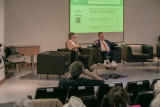
As the world grapples with massive challenges—climate change, rapid urbanisation, digital disruption, and growing inequality—some cities are not waiting for top-down solutions. They are rolling up their sleeves and experimenting with new ways to improve life for everyone, block by block. Amsterdam is one of those cities.
That’s why I was proud to share Amsterdam InChanges approach to smart, inclusive urban innovation at the #CIPPCD2025 conference in Aveiro.
Through our open innovation platform, <strong>Amsterdam InChange</strong>, the city has become a global leader in turning lofty global ambitions into practical, local action. But Amsterdam’s model isn’t built around flashy tech or utopian blueprints. Instead, it’s grounded in an essential question: How can we use innovation to improve people’s everyday lives?
Local Action for Global Challenges
Amsterdam understands that the climate crisis, digital transition, and social inequality can’t be solved by government alone—or by technology alone. That’s why it launched Amsterdam Smart City in 2009 as a public-private partnership. What began as small-scale energy-saving pilots has grown into a community of over 8,500 members, coordinating more than 300 projects across the city and beyond.
The approach is rooted in co-creation. Citizens, companies, knowledge institutions, and government actors come together to design, test, and scale solutions that serve the public good. The values that guide the network are clear: people first, openness, transparency, learning by doing, and public value.
The Doughnut as a Compass
Amsterdam was the first city in the world to embrace Doughnut Economics as a guiding framework. The “City Doughnut,” developed with economist Kate Raworth, helps policymakers balance the city’s ecological footprint with the social foundations that all citizens need: housing, education, health, equity, and more. It’s a tool to align every local decision with both planetary boundaries and human dignity.
This framework has inspired circular construction strategies, neighbourhood energy co-ops, and more inclusive procurement policies. It shows that global concepts can become real when grounded in local practice.
Making Innovation Inclusive
One of Amsterdam’s core beliefs is that smart cities must be <strong>inclusive cities</strong>. That means tackling issues like <strong>mobility poverty</strong>, where rising transport costs and digital-only services make it harder for low-income or elderly residents to get around.
Through the <strong>Mobility Poverty Challenge</strong>, Amsterdam partnered with the Province of North Holland and researchers from DRIFT to understand where and how exclusion occurs—and to design better public mobility systems. Pilot ideas like a “Mobility Wallet” (a subsidy for essential travel) and more inclusive digital apps emerged from real conversations with affected residents.
The same inclusive mindset guides Amsterdam’s digital transformation. In the suburb of Haarlemmermeer, officials flipped the script on e-government. Instead of asking citizens to become “digitally skilled,” they asked how government systems could become more <strong>humane</strong>. This led to simplified interfaces, better access to services, and ultimately more trust.
Responsible Tech and Energy from the Ground Up
Tech transparency is another pillar of the Amsterdam model. The city runs the world’s first <strong>Algorithm Register</strong>, giving the public insight into how AI and automated systems are used in services—from traffic enforcement to housing applications. Anyone can access this register, offer feedback, and better understand how digital decisions are made.
In the energy space, the city supports both bold innovation and careful upscaling. At the <strong>Johan Cruijff ArenA</strong>, used electric vehicle batteries store solar energy, powering concerts and matches with clean backup power. At the same time, a coalition of partners led by Amsterdam InChange is working to scale up Local Energy Systems by collecting lessons learned and creating a toolkit for community-led energy.
What Makes It Work?
If there’s one secret to Amsterdam’s success, it’s the governance model: small, neutral facilitation teams guiding large multi-stakeholder coalitions, anchored by public trust and shared purpose. Regular Demo Days allow project teams to showcase progress, get feedback, and adapt. This culture of transparency and iteration helps avoid the so-called “innovation graveyard,” where pilot projects go to die.
The city also embraces failure—as long as it’s shared and learned from. Reports like “Organising Smart City Projects” openly list lessons, from the importance of strong leadership to the need for viable business models and continuous user involvement.
An Invitation to Other Cities
Amsterdam’s smart city is not a blueprint—it’s a mindset. Start with your biggest local challenge. Bring the right people together. Make space for experimentation. Build bridges between local and global. And, above all, put citizens at the centre.
As international smart city ambassador Frans-Anton Vermast puts it: “We’re not just creating technology for cities—we’re creating better cities for people.”
The III International Conference on Public Policies and Data Science
Neem je werk en je uitdagingen mee naar buiten en vier Outdoor Office Day in het Amsterdamse Bos
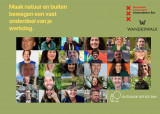
De stedelijke natuur als jouw werkplek.
Dit jaar in het Amsterdamse Bos waar iedereen duurzame leiders, toekomstdenkers & doeners kan ontmoeten. Zij staan klaar om met jou een rondje Amsterdamse Bos te lopen. Boek een één-op-éen wanderwalk om jouw onderwerp of uitdaging te bespreken.
Of neem jouw overleg mee naar buiten of kom met je laptop het bos in. Inspirerende ‘collega’s’, frisse lucht vers van de bomen en natuurlijk een duurzame barista. Het grote buitenkantoor is 12 juni ingericht met buiten werkplekken & inspiratie.
Outdoor Office Day 2025
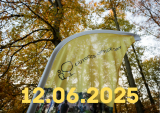
On June 12th 2025 we will celebrate the 7th edition of the international Outdoor Office Day. It’s an open invitation to take your work outside, reconnect with the surrounding urban nature around your office.
This year’s theme is 'Connecting with each other’: with your direct colleagues, colleagues from other departments, neighbours, or external relations. Please join the growing network of individuals and companies that take their work outside more and more often. Get inspired whilst you spend time surrounded by urban nature. This enhances new and meaningful relationships, stimulates the flow of good ideas and supports the forging of valuable collaborations.
Please meet our partners and participants:
https://www.outdoorofficeday.nl/participants
If in Amsterdam we invite for wanderwalk with sustainable leaders. Join us in Amsterdamse Bos to discuss your dilemma's, learn from each other and connect.
Sensemakers #IoTDay celebration: Easter Workshop

For the 15th year we're celebrating International IoTDay, it's all about sharing knowledge about how to create your own projects and connecting with people in the process!
We’re excited to share a fun and engaging project with you! Join the Easter workshop, creating a beautiful personalized ornament that you can lasercut and program yourself! (of course we'll help!)
More information on the project can be found here:
https://sensemakersams.org/wp-content/uploads/2024/12/Sensemakers-XMas2024-Project.pdf
There is a fee involved, but we have 2 'Pay-It-Forward' kits available for those low on budget this holiday season. Just dm Manon if you want one of those!
And of course we'll have some free alternatives like experimenting with 3D printing your own Easter-buddy:-)
PhD translation: Capturing change in the energy transition and beyond (with Tessa de Geus)
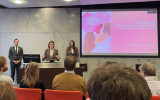
(this event is in Dutch)
De actie-onderzoekers van DRIFT werken jarenlang aan hun proefschrift en ontwikkelen daarmee state-of-the-art kennis en tools. Traditioneel gezien wordt deze kennis echter alleen ontsloten in boekvorm en overgedragen aan hun commissie van (hoog)leraren. Daarom organiseren we naast een PhD-verdediging een PhD-vertaling.
Op 11 april is de beurt aan Tessa de Geus. We duiken in haar proefschrift ‘Capturing change’ (<em>verandering vatten).</em> Het onderwerp: verschillende vormen van ‘capture’ in de energietransitie – krijgen radicale nieuwe initiatieven of ideeën de wind eronder zodra ze zich op een groter speelveld begeven of raken ze vleugellam?
Hoewel de term buiten de transitiewetenschap (nog) niet zo bekend is, is ‘capture’ een heet hangijzer voor wie werkt aan fundamentele maatschappelijke verandering. Denk aan een overheid die een burgerinitiatief ondersteunt of eigen innovatieve praktijken opschaalt – in grote veranderingsprocessen als de energietransitie is veel hoop gevestigd op zulke nieuwe bestuursvormen, maar is weinig bekend over de schaduwzijde ervan, stelt Tessa.
Net als bij de PhD-verdediging beginnen we met een ‘lekenpraatje’ — Tessa legt in begrijpelijke taal uit wat ze heeft onderzocht en welke conclusies en aanbevelingen daaruit volgen.
Daarna openen we het gesprek. Onze drie panelleden stellen zich kort voor en dan gaan met de promovendus in gesprek over vragen als: wat betekenen jouw uitkomsten voor mijn beleid, bedrijf of activisme? Wat herken ik en wat zie ik toch anders? En hoe zouden we opgedane lessen en methodes kunnen toepassen in ons (werk)veld?
Op 11 april kun je van 10:00-11:00 via YouTube live meekijken met dit evenement. Meer informatie vind je op onze website:
Online course Just Sustainability Transitions

Across six interactive online sessions, this course offers the tools, knowledge, and inspiration needed to support just and sustainable transformations – grounded in action research, critical reflection, and peer learning.
We are offering the course for the third time, this year in collaboration with Dina Lupin from University of Southampton.
We have made the programme a bit more compact to make it more affordable, and as always offer it at a variable rate (€1,775.00 for well-paid professionals and €1,245.00 for those with more limited financial means) to make it as accessible as possible.
Stream the Amsterdam Forever Young Programme on Eye Film Player

Discover the Amsterdam Forever Young program on the Eye Film Player, a diverse programme that explores the dynamic, ever-evolving spirit of Amsterdam. This collection of films highlights how the city’s unique identity has been shaped by its past, present, and future. Hence, we place a special focus on the intersection of urban development and planning, offering a look at how the city’s architectural and cultural transformations have intertwined in, both, historical films, as well as more contemporary filmic undertakings. Thus, our collection of films, such as Where the Rats are King, A Photographer Films Amsterdam and Amsterdam Global Village, shed light on the living conditions in Amsterdam, the urban communities witihin Amsterdam and, even, films as Jenny and Amsterdam on Film that shed light on how the canals have shaped Amsterdam more than aesthetically e.g., with its focus on ecology and care for our climate. Through, both, monetized and free to watch films, we aim to share the rich history of our city, whilst aiming for a dynamic space for creativity, inclusivity, and sustainability in the future, too that we hope this knowledge and collection will inspire.
All in all, Amsterdam Forever Young invites you to reflect on the city's evolution and its commitment to being a centre of modernity, without losing the essence of its heritage. Available on the Eye Film Player, to watch from your bedroom, this "digital" exhibition celebrates Amsterdam as the city of urban transformation that, at the same time, stay true to its historical roots.
Sensemakers knowledge sharing: Deepfakes & Digital Humans

This Wednesday we have 2 speakers introducing you to the latest on synthetic media (deepfakes) and digital humans.
Manon den Dunnen
Introducing you to the latest developments in synthetic media (deepfake, LLM's)Mao Lin Liao (Reblium)
Introducing the challenges and possibilities of customized digital humans (avatars) and their various applications.
Looking forward to seeing you! Presentations are in Engels, maar we spreken ook Nederlands!
Artikel 'Eigen opwek voor de buurt - Slim omgaan met het bestaande net'

Hugo Niesing, directeur van Resourcefully, werd geïnterviewd in het decembernummer 2024 van het gemeentelijk magazine van Amsterdam over innovatieve oplossingen voor de integratie van mobiliteit, energie en netcongestie. Het artikel laat zien hoe projecten zoals de pilot in Sporenburg in het Oostelijk Havengebied bijdragen aan een duurzaam en toekomstbestendig lokaal energiesysteem. Hier werken we met 500 huishoudens om piekuren te verminderen en lokaal opgewekte energie optimaal te benutten.
Lees hier meer over dit inspirerende initiatief via de link.
Zero Emission Urban Logistics Challenge
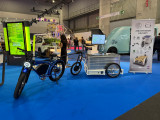
From January 1 2025, a zero-emission zone will be introduced in the centre of Amsterdam, with the aim of improving air quality and making the city healthier and more liveable. This policy helps achieve climate goals and supports the ambition of becoming climate neutral by 2050. It encourages zero-emission urban logistics, which contributes to reduced pollution, noise, and traffic congestion. And cleaner air also has positive effects on the health and well-being of residents. With this initiative, Amsterdam - and other Dutch cities implementing such zones this year - aim to set an example for other cities and stimulate innovation in sustainable mobility. The so-called "zero-emission zone" is therefore an essential measure in the transition to a cleaner and more sustainable city.
This transition will only succeed through collaboration. Therefore, considerable attention is being paid to the experiences and needs of small business owners in the city. Think of; market vendors, house painters, and local greengrocers. What kind of support do they need to transition to zero-emission vehicles, and how do entrepreneurs creatively adapt to the transition and new rules? Other cities and municipalities are closely observing and there is a strong need for knowledge sharing. It is important that the experiences and lessons learned from Amsterdam, as one of the pioneers, are well-documented and shared on a national and international scale.
Curious about... Taking back society

Power to the people? Jazeker! Actief burgerschap, gemeenschapszin – het is helemaal in. Mensen zijn toe aan verandering en willen een stem hebben in de dingen die belangrijk voor ze zijn. De grote uitdagingen van onze tijd vragen om grote oplossingen en daar willen we onderdeel van zijn. Meer en meer krijgen we dat samen voor elkaar, buiten de gebaande paden, in vernieuwende organisatievormen, of op eigen initiatief – niet langer aan de zijlijn, maar midden in het speelveld. Van samen je eigen droomwoning maken tot het testen van ons collectief vermogen om te delen.
Ontmoet de doeners en makers die de maatschappij terugpakken om de wereld vooruit te helpen. Op 29 januari organiseren A Lab en Vandejong de 5e editie van Curious about... We duiken in nieuwe organisatievormen, nieuwe woonvormen, nieuwe zorgvormen en nieuwe natuur. Er zijn succesverhalen en hobbels op de weg. We ontrafelen hoe geld onze samenleving beïnvloedt, krijgen inzicht en handvatten om onze idealen te verwezenlijken, we leren hoe een initiatief niet wordt overgenomen door kapitaal en hoe niks zorgt voor meer... Bekijk het volledige programma en meld je gratis aan op a-lab.nl.
Research Interviews Request for PhD Dissertation!
My name is Pınar Ebe-Güzgü, a PhD student at İzmir Katip Çelebi University, Turkey, currently conducting research at the University of Twente. My doctoral research focuses on social justice and disadvantaged groups in the context of smart city applications, with a particular emphasis on the mobility of elderly people (defined by WHO as people over the age of 65).
As part of my research, I conduct in-depth interviews with residents (aged 65+) of Amsterdam, caretakers of elderly individuals, and those working on (or with expertise in) smart city initiatives. The goal is to explore the mobility experiences of 65+ people in Amsterdam and develop policy recommendations to enhance social justice in urban management.
If you would like to share your experiences, your participation in this research would be invaluable. All interviews will be conducted at a time and format that suits you.
Thank you for your time and consideration. Your insights will greatly contribute to our understanding of how smart city applications impact the mobility and quality of life of older individuals.
If you are interested in participating, please reach out to me via the email address below:
p.ebe-guzgu@utwente.nl
Best regards,
Pınar Ebe-Güzgü
Waag Open: Expeditie DNA Digitaal

Nog nooit was het zo makkelijk om je DNA te laten testen, op afkomst, verwantschap en op gezondheid. Je staat daarbij je meest persoonlijke data af, zonder controle te hebben over wat er met die gegevens gebeurd. Gelukkig kan het digitaliseren van DNA binnenkort ook anders - op zo’n manier dat we een bruikbare database voor de samenleving bouwen, terwijl jij controle over je eigen data behoudt. Tijdens Waag Open op donderdag 12 december duiken we in de waarde en in de risico’s van een digitale DNA databank. Maak kennis met de eerste testpersonen en ontwerp zelf mee!
Kijk voor meer informatie op waag.org.
Datum: Donderdag 12 december
Tijd: 19:30 - 22:00 uur
Locatie: Waag, Nieuwmarkt 4, Amsterdam
Waag Open
Elke eerste donderdagavond van de maand opent Waag haar deuren! Kom langs om te discussiëren en te doen. Want we gaan niet alleen in discussie over maatschappelijke thema's en de toekomst – je leert daarnaast ook altijd iets praktisch. Iets dat je altijd al hebt willen uitproberen, zoals de 3D-printer in het FabLab, of juist iets dat je nooit had verwacht, zoals uitpluizen hoe DNA in elkaar zit in ons biotech-lab. Waag Open vindt plaats in de maakplaatsen op de eerste en tweede verdieping van het historische Waaggebouw op de Nieuwmarkt.
Help mee de geschiedenis van Noord zichtbaar te maken!
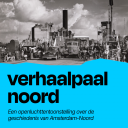
Wist je dat Overhoeks het oudste stukje Amsterdam-Noord is? En dat vlak achter Eye het galgenveld van Amsterdam lag? Verhaalpaal Noord is een openluchttentoonstelling over de onbekende geschiedenis van Amsterdam-Noord die vanaf maart 2025 te zien is op Overhoeks in Amsterdam Noord.
Verhaalpaal Noord wordt ontwikkeld door creatief bureau Zeppa in samenwerking met schrijver Bas Kok. Het project is onderdeel van Amsterdam 750, maar we zijn nog op zoek naar laatste financiering en zijn daarom een crowdfunding gestart.
Wil jij helpen de onbekende geschiedenis van Noord zichtbaar te maken? Steun ons dan op voordekunst.
Stay up to date
Get notified about new updates, opportunities or events that match your interests.

